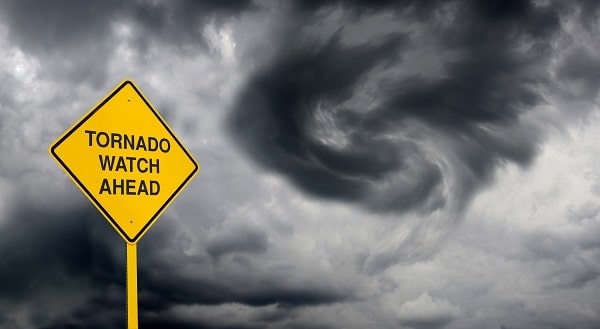Amtrust North America issued the following announcement on March 9
On average, around 1,000 tornadoes are reported across the United States every year, the highest number of any country in the world. In January 2020 alone, 82 tornadoes hit states in the South and Southeast, due to a strong, spring-like storm system tearing through the regions. This was the third largest January tornado outbreak on record.
On March 3, tornadoes struck the Nashville area in Tennessee, knocking down power lines, destroying dozens of buildings and killing at least 24 people. With winds of around 160 mph, the tornado was categorized as an EF-3, the fourth-highest on the six-level Fujita Scale.
“Our thoughts are with Nashville,” said Shelli Hula, commercial claims adjuster at AmTrust. “At times like this, we really see how important community is by rallying around each other and offering emotional and financial support.”
How Businesses Can Prepare for a Tornado
Tornadoes cause an average of $1.1 billion in property damage every year, ranging from minor repairs to total destruction. With the exception of some types of specialty buildings, most buildings are not constructed to withstand the force of a severe tornado.
While there’s no way to eliminate all the damage if a building is in the direct path of a tornado, there are things business owners can do to help mitigate their risks. The first step is assessing how prone the area is to tornadoes. Some parts of the country are more likely to experience tornadoes than other regions, such as “Tornado Alley” in the south-central United States.
Stay on top of the weather alerts during bouts of storm activity. A tornado watch means the conditions are favorable for a severe thunderstorm or tornado, but there is no urgent threat. A tornado warning, on the other hand, is issued when a tornado touchdown is imminent or when one has already occurred in the nearby vicinity. During a warning, sirens will go off and people should take shelter immediately until it is safe to exit.
If a business is at a heightened risk, it’s crucial to create a plan that protects both the company’s employees and property. For employees, make sure they understand the emergency plan if a tornado watch or warning pops up during working hours. The staff should know what areas of the building are the safest, which usually include basements, corridors, or interior, windowless rooms on the first floor.
Should a tornado warning be in effect, minimize the damage by keeping exterior doors and windows closed to keep out rain and flying debris. The property should also be kept well maintained throughout the year to reduce the threat from wind-borne debris. Identify and remove branches and trees that could possibly fall on the building walls, roof or power lines and repair loose siding, shingles, brickwork and roofing throughout the year.
What to do After a Tornado
Following a tornado, the first thing to do is to make sure everyone is safe. Continue to listen to weather alerts to stay updated on any additional tornadoes or storms on the way. Stay with your team and wait for emergency crews to arrive, and follow all instructions given. Keep clear of heavily damaged areas as much as possible, and watch out for downed power lines, broken glass, debris and other sharp objects.
Contact your insurance company and file a claim as soon as possible. The sooner this happens, the faster an adjuster can visit the property and start assessing the damages. In the meantime, you should review your policy and start making a detailed list of all the damage the property has sustained, including the interior and exterior of the building, the grounds, equipment and vehicles.
It’s important to keep in mind that there are dishonest individuals that may flock to devastated areas following a disaster, hoping to take advantage of people when they are at their most vulnerable.
“Choose only local, reputable contractors and roofers that have been doing business in your area for years. Do not use someone coming in from out of state,” Hula advised. “Additionally, public adjusters may insert themselves into a claim and charge a percentage of the insurance settlement to negotiate the claim on the business’s behalf. Be aware and do not assign over benefits to any contractor, roofer, or public adjuster. Once this happens, the business owner no longer has a say in the claim and how far the claim will be taken.”
Original source can be found here.

Source: Amtrust North America
.jpg)



 Alerts Sign-up
Alerts Sign-up